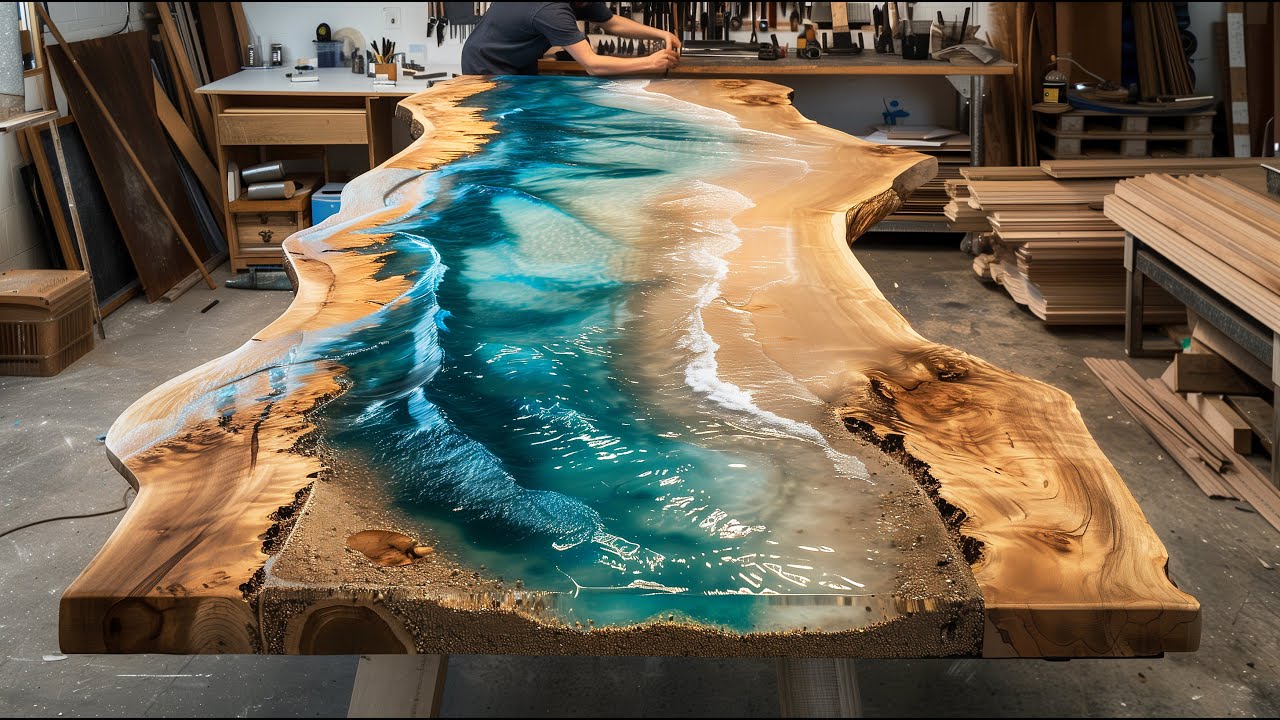·
Jul 28, 2025
Why Does My Epoxy Wood Filler Bubble or Sink? Causes and Fixes
Common Reasons for Bubbles in Epoxy Wood Filler
1. Air Trapped in Wood Grain
Wood is porous. When you pour epoxy into cracks or knots, trapped air in the grain rises to the surface and creates bubbles.
Fix:
Seal the wood with a thin "seal coat" of epoxy before the main pour. Use a heat gun or torch gently to pop bubbles after applying the filler.
2. Mixing Too Vigorously
Whipping the resin and hardener together too quickly introduces tiny air pockets.
Fix:
Mix slowly and steadily in a round motion. Scrape the sides and bottom of the mixing cup for even consistency.
3. Pouring in Thick Layers
Thicker pours generate heat and can create chemical reactions that cause off-gassing or micro-bubbling.
Fix:
Pour in multiple thinner layers for deeper cracks or voids, allowing each to partially cure before adding the next.

4. Cold Temperatures
Cool environments slow curing and can trap air before it escapes.
Fix:
Work in a temperature-controlled space, ideally 70–75°F (21–24°C). Warm the resin and the wood slightly before pouring.
Why Epoxy Wood Filler May Sink After Curing
1. Shrinking During Cure
Low-quality or fast-curing resins may shrink as the solvent evaporates or the chemical reaction completes.
Fix:
Choose a high-quality, low-shrink epoxy designed specifically for wood filling and deep pours.
2. Absorption by the Wood
If the wood is extremely dry or porous, it may absorb the resin and cause it to sink.
Fix:
Again, apply a seal coat first. Also, pre-moisten very dry wood to reduce absorption.
3. Inadequate Filling
Sometimes the void was deeper than expected and not completely filled on the first go.
Fix:
Inspect the surface after curing. If needed, apply a second fill layer to even it out.
Pro Tips for Flawless Epoxy Wood Filler Application
- Use a syringe or squeeze bottle for narrow cracks to reduce bubbles.
- After pouring, let the epoxy rest for a minute, then use a heat gun or butane torch (carefully) to remove bubbles.
- Avoid over-stirring—epoxy doesn’t need to be whipped like cake batter!
- Always follow the manufacturer’s mixing ratio precisely (e.g., 2:1 or 1:1).
The Bond Craftor Advantage
At Bond Craftor, our epoxy resin wood filler is formulated to reduce bubbling and resist shrinkage. Whether you're restoring vintage furniture or filling cracks in live-edge slabs, our deep-pour resin offers:
- Low-viscosity for better penetration
- Excellent air release
- Crystal-clear or pigment-ready finish
- Minimal shrinkage over time
🔗 Shop our Deep Pour Epoxy Resin Kits →
Ready to give your wood project a flawless finish? Discover why makers trust Bond Craftor.
Frequently Asked Questions
Q: Can I sand epoxy wood filler?
A: Yes! Once fully cured, it sands smooth and can be finished just like wood.
Q: How long should I wait before applying a second layer?
A: Usually 4–6 hours, depending on the temperature and the brand’s cure time.
Q: Can I stain over epoxy filler?
A: Epoxy doesn’t absorb stain like wood does. Tint it before application, or paint over it after curing.


